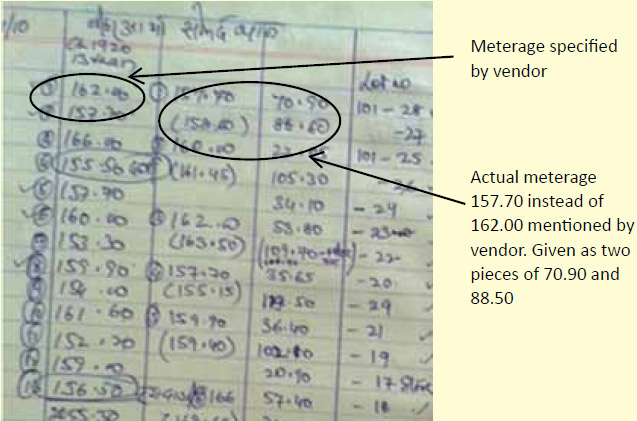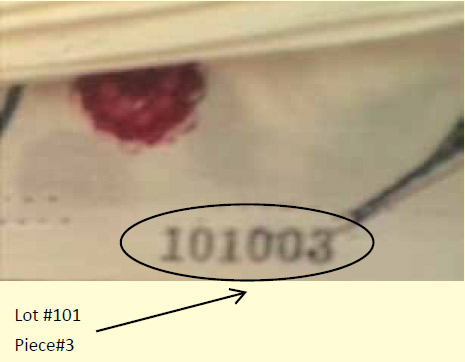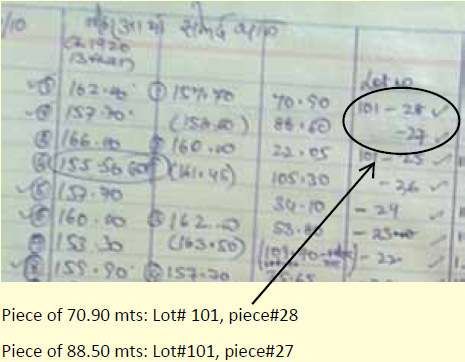Following is an overview of the material tracking process
Material from vendor
• Material from vendor – meterage recorded
Record of meterage
• Actual meterage measured and recorded
• A record made of number of pieces yielding the specified meterage
Assigning lot numbers
• Each lot is given a specific number
• Each lot contains 100 pieces from same vendor, and of the same type of fabric
• Different lot numbers for different vendors
• Different lot numbers for different kinds of fabrics
Mapping of pieces to printers
• Each piece mapped to the printer along with type of print to be done
Record of final meterage
• Final meterage recorded after post curing / washing/drying
Step 1: Receipt of material from the vendor
The material received and the meterage mentioned by the vendor is recorded. The material can be received as:
- 1. Bales, which has multiple pieces of fabric, called thaan
- 2. Individual pieces of a certain meterage. This typically happens in cases where only a small quantity of fabric needs
to be printed.
Step 2: Validation of meterage
The material received is measured to check for accuracy and the actual length is recorded. Any deviation from the meterage mentioned by the vendor is brought to the notice of the vendor.

Step 3: Assigning lot numbers
A lot number is then given to the material. One lot can contain a maximum of 100 pieces of one kind of material received from one vendor. Thus, the lot number will be different for two different vendors, and different for two types of fabrics.
Piece number is given to individual pieces of material if received in that manner from the vendor, or to each thaan.
For example, a number of 101036 represents piece #36 in lot #101. The last number in this lot will be 101100. The next piece of the same kind, and by the same vendor will be given a number of 102001


Step 4: Mapping of pieces to printers
Each piece is then mapped to a printer, along with the type of printing that needs to be done. Each thaan, or piece may then be cut into smaller fragments depending upon the type of printing being done. From here on, the material is tracked through the printer to whom it has been assigned to.


Leave a Reply